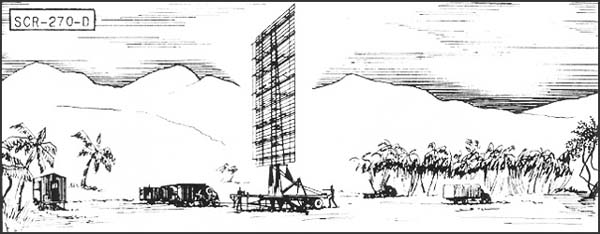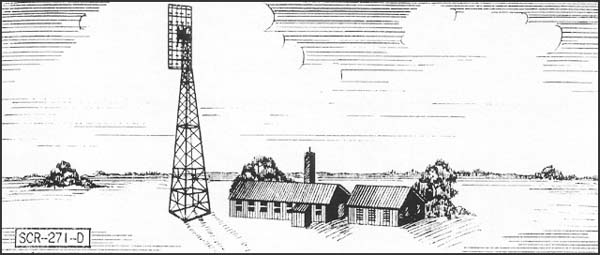The Army acquired a total of 23.081 acres as follows: 13.399 acres from the City of San Diego by 8 separate leases (0.024 acres by W-04-193-ENG-3309, 0.215 acre by W-04-193-ENG-3307, 8.61 acres by W-2972-ENG-904, 0.75 acres by W-04-193-ENG-1484, 0.91 acre by W-04-193-ENG-944, 2.59 acres by W-2972-ENG-884, 0.15 acre by W-2972-ENG-1030, and 0.15 acre by W-2972-ENG-881), 0.02 acre lessor interest from the City of San Diego, 7.24 lease acres from the City of San Diego and the Ryan Aeronautical Company, and 2.422 lease acres from the Mission Bay Lands, Inc. by a directive from the Office of the Under Secretary of War dated 10 April 1942.
The site was used by the Army's Los Angeles Control Group for radar operations and as a campsite. The site was equipped with the the SCR-270, SCR-271, SCR-516 and finally SCR-588 radar sets. The site was garrisoned by the 657th and later 658th Signal Aircraft Warning Companies.
The Army cancelled the leases as follows: 7.24 acres released 31 November 1947, 0.024 acre released 6 July 1947, 0.215 acre released 14 October 1946, 2.422 acres released 3 July 1946, 8.61 released 20 September 1947, 0.75 acre released 14 December 1946, 0.91 acre released 9 July 1947, 2.59 acres released 23 February 1948, 0.15 acre released 11/6/47, 0.15 acre released 25 July 1947. The 0.02 acre permit was cancelled effective 14 September 1948. The site is currently owned by the City of San Diego. Total disposal was 23.081 acres.

| Altitude, feet | 1000 | 5000 | 20,000 | 25,000 |
| Range, miles | 20 | 50 | 100 | 110 |

| Altitude, feet | 1000 | 5000 | 20,000 | 25,000 |
| SCR-271-E Range, miles | 20 | 50 | 100 | 110 |
| SCR-271-D Range, miles | 25 | 60 | 120 | 135 |

| Altitude, feet | 1000 | 5000 | 20,000 | 25,000 |
| Range, miles | 20 | 50 | 95 | 105 |